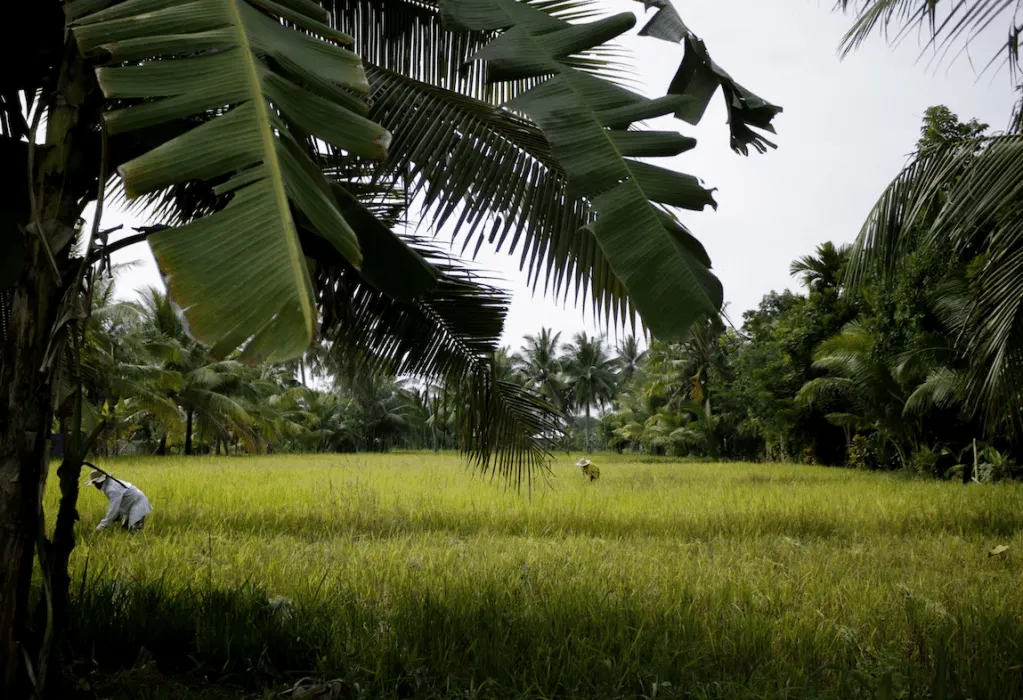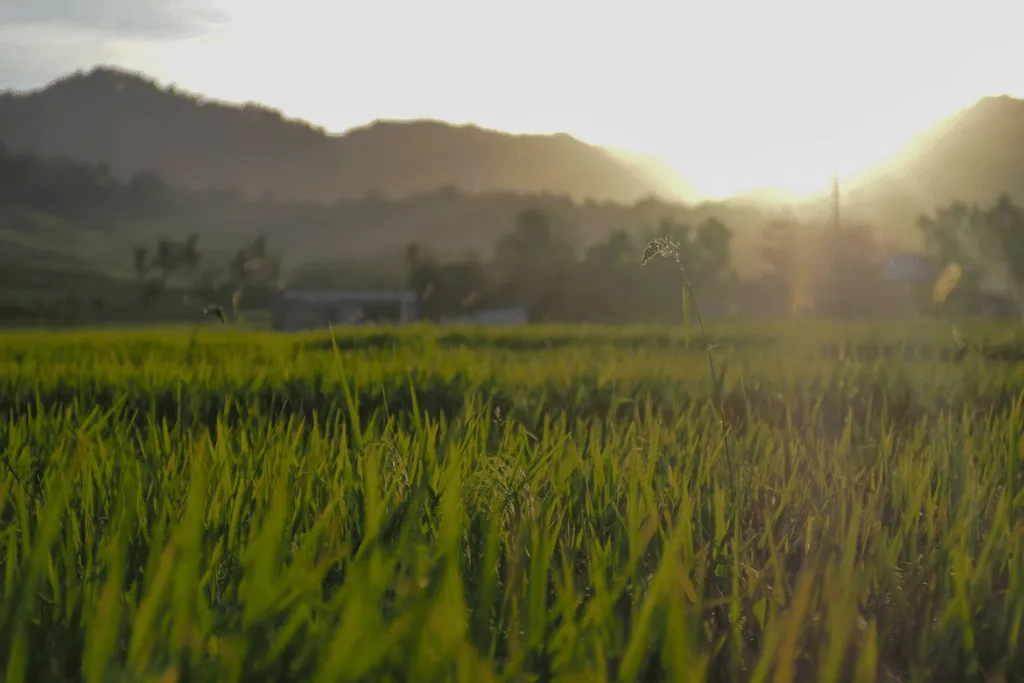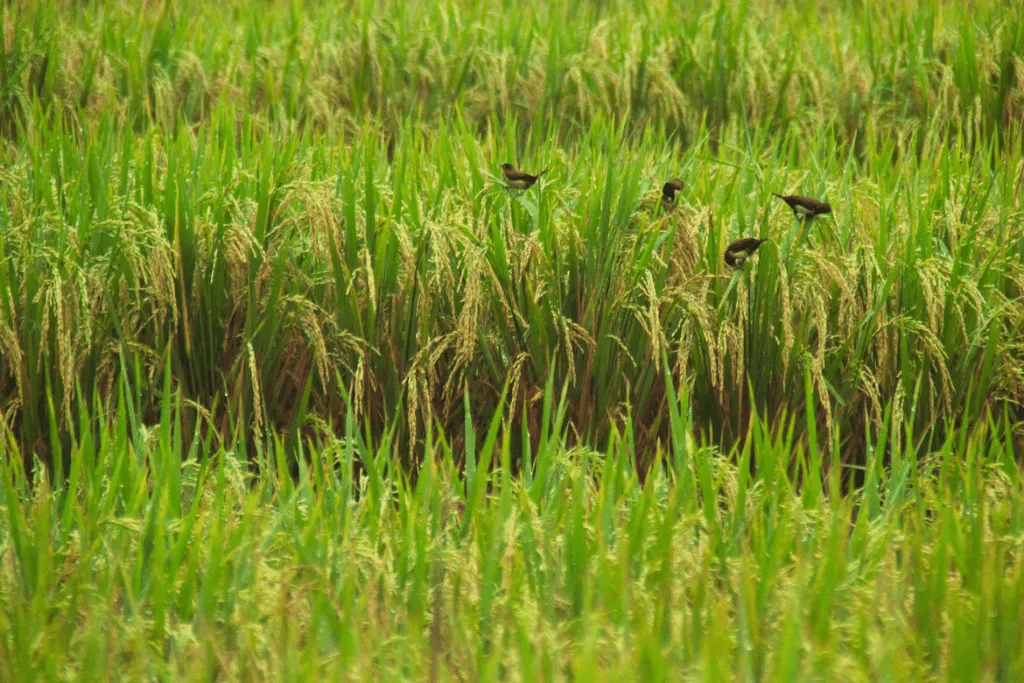High temperatures and a prolonged drought caused by climate change in Kashmir are proving dire for region’s farming community. Whole Kashmir depends on rice cultivation as its main source of food. Yet the essential crop faces a worrying future as climate change raises Earth’s temperatures and intensifies hurricanes, droughts and heat waves.
Paddy farmers of Kashmir
Kashmir recorded 80 per cent less rainfall than normal this year, causing temperatures to rise. In some places, the average temperature had increased from 15-20 degrees to above 30 degrees.
With changing rainfall patterns, farmers face the dual threats of floods and droughts. Both extremes can destroy food crops. Floods wash away the fertile topsoil that farmers depend on for productivity. While droughts dry it out, making it easier to blow away or wash away. Higher temperatures increase the water needs of crops, making them even more vulnerable during dry spells.
The land under paddy cultivation in Kashmir is declining as nearly 30,000 hectares of land have been lost since 2013.

Distressed and frustrated Nazir Ahmed Mir told Ground Report that he planted paddy on his two-acre plot in the Ganderbal area of central Kashmir. Mir says that his months of hard work were wasted as the land has become almost barren due to scorching heat and lack of water.
“We are reaching the temperature of 34 degrees Celsius. Otherwise, that heat wave was foreign to Kashmir. You can see that the ground looks barren, and if we plant anything here, we fear it will turn into dry, dead twigs in the next few days. It’s scary to imagine the scenery. Very little water has accumulated in the fields due to rain,” Mir said.
For farmers like Mir, if the situation does not improve, they will have no option but to leave farming forever. “Look, our kids don’t want to do this. They ask, ‘What’s the use of working so hard to make up for the loss in the end?’ We can sell this land and do some other business, Mir said.
Rising temperature
J&K has surpassed the world average in temperature rise (for the last 100 years). As against the global increase of 0.8 to 0.9, the state has registered a rise of 1.2 degree Celsius in temperature. Seasonal air temperatures also show an increase in all seasons, which according to experts is a matter of concern.

The production of irrigated rice, wheat and mustard can be reduced by six per cent, four per cent and four per cent respectively in Jammu and Kashmir. The deficit in foodgrain production in the Kashmir region has reached 40 per cent, while vegetable production is short by 30 per cent and oilseeds by 69 per cent.
Changes in climatic conditions are expanding the general range of pests causing more diseases to crops and ultimately reducing the production of food crops. In the past few years, due to climate change, there has been disappointing production of paddy every year, and farmers in many areas of the valley are adopting horticulture.
Climate change in the Kashmir Valley
According to a research titled “Projection of climate change in the Kashmir Valley”, carried out by the University of Agriculture of the region, the states of Jammu and Kashmir suffer from the impact of climate change. The study predicts that in this area there will be an increase in the number of rainy days by 2030.
“Similarly, annual temperatures are expected to increase over the next century compared to the base period of 1970. The Special Report on Emission Scenarios forecasts an increase in annual maximum and minimum temperatures as well as rainfall for the region.”
Over the years, the valley has experienced erratic patterns of rainfall. According to the Meteorological Department (MeT) data in Srinagar, in the first five months of 2022, Kashmir witnessed a rainfall deficit of 38 per cent.

The data shows that the Kashmir Valley has experienced a significant deficit of pre-monsoon rainfall in the past few years. From March 1 to May 31, 2022, the region received 99.5 mm of rainfall, which is 70 per cent less than the average. In comparison, there was a decrease of 16, 28, 35 and 26% respectively between March and May of each of the following years-2017, 2018, 2019, 2020 and 2021.
India’s rice production could decline
India’s paddy output in the crop year 2022-23 could decline to 128.5 million tonnes (MT) mainly due to poor monsoon rains, especially in eastern regions, the United States Department of Agriculture said. United States (USDA).
The reduction in the rice production forecast is based on a reduction of 1 million hectares in the harvested area at 46 MH. India’s rice exports are projected to rise to a record 22 MT in 2022-23 and account for 40% of global shipments despite a possible drop in domestic production over the period, the India Department of Agriculture said. India exported rice to more than 100 countries in 2021-22.
Extreme water stress
A more immediate concern, infinitely complicating the climate issue, is the country’s looming water shortage. According to a report by NITI Aayog, 600 million Indians face high to extreme water stress. By 2030, the country’s demand for water is projected to double the available supply, implying severe water shortages. And an eventual loss of ~6% in the country’s GDP.
A recent study estimates that, based on current practices adopted by Indian farmers, rice yields will experience a substantial decline by 2050, unless proper management strategies are employed to mitigate the effects of climate change.
Unless conservation practices are combined with reduced post-harvest losses. The study warns irrigation requirements for higher yields could increase by as much as an unsustainable 45%.
Support us to keep independent environmental journalism alive in India.
Keep Reading
Part 1: Cloudburst in Ganderbal’s Padabal village & unfulfilled promises
India braces for intense 2024 monsoon amid recent deadly weather trends
Follow Ground Report on X, Instagram and Facebook for environmental and underreported stories from the margins. Give us feedback on our email id greport2018@gmail.com.
Don’t forget to Subscribe to our weekly newsletter, Join our community on WhatsApp, and Follow our YouTube Channel for video stories.










